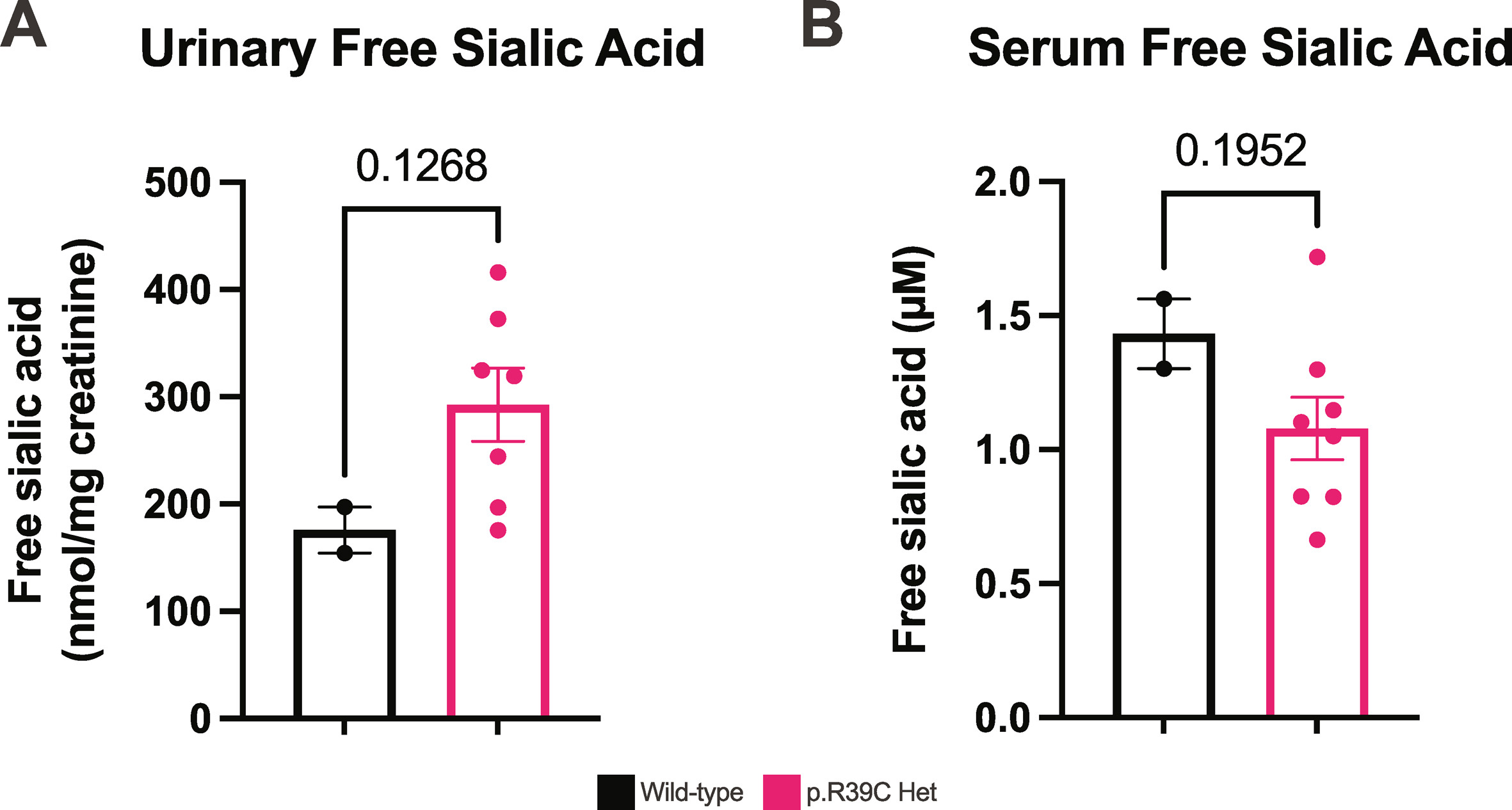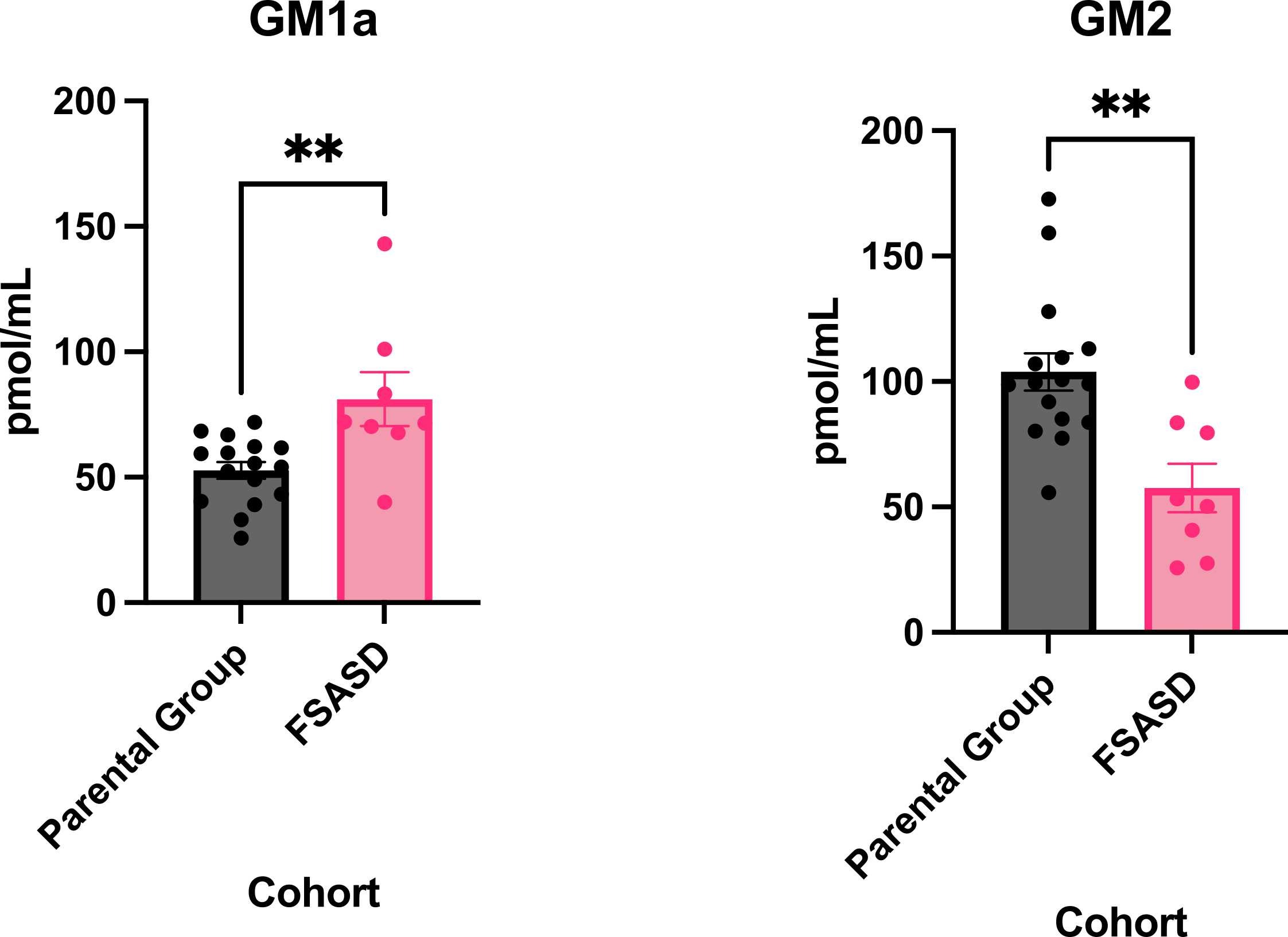Publications
The STAR Foundation and our family community are extremely grateful to the scientists and clinicians working to learn more about FSASD/Salla.
Many publications listed below are open access to the public; however, please email us if there is a paywall and you would like to receive a copy for your personal use.
If you are a clinician or researcher interested in joining the Free Sialic Acid Disorders Consortium, please contact Dr Sarah Goebel.
Highlights

2025
Lack of significant ganglioside changes in Slc17a5 heterozygous mice: Relevance to FSASD and Parkinson's disease
Studies suggest that while SLC17A5 mutations cause FSASD and were suspected to influence Parkinson’s risk, mouse research found no major brain lipid changes, indicating the variant likely does not contribute to Parkinson’s disease.

2025
Changes in glycosphingolipid levels in plasma and cerebrospinal fluid of individuals with Lysosomal Free Sialic Acid Storage Disorder
FSASD patients show abnormal levels of certain brain lipids (gangliosides) in blood and spinal fluid, which could help track the disease and guide future studies.

2021
Free sialic acid storage disorder: Progress and promise
FSASD is a rare genetic disease, causing sialic acid buildup that leads to developmental and movement problems. While no treatments exist yet, research is actively underway with support from experts and the STAR Foundation.
All publications
2025
Sabir, M. S., Dobrenis, K., Rha, A. K., Pollard, L., Leoyklang, P., Marrero, M., ... & Malicdan, M. C. V. Profiling glycosphingolipid changes in mouse and human cellular models of lysosomal free sialic acid storage disorder. Molecular Genetics and Metabolism Reports, 45, 101275.
In lab models of Lysosomal Free Sialic Acid Storage Disorder (FSASD), when the normal transporter for sialic acid is broken, the cells end up with too much free sialic acid — and this disrupts the balance of important fat sugar molecules (gangliosides), which could help explain how the disease causes damage.
2025
Sabir, M. S., Huizing, M., Gahl, W. A., Platt, F. M., & Malicdan, M. C. V. Dissecting the impact of N-acetylmannosamine (ManNAc) on ganglioside levels in a sialin-deficient cell model. Micropublication Biology, 2025, 10-17912.
People with a faulty “sialin” protein (as in FSASD) still cannot fully fix the abnormal processing of certain brain-related fats even when given extra building blocks. Supplying a precursor of sialic acid (N acetylmannosamine, ManNAc) is not enough to restore normal fat chemistry.
2025
Adams, D., Huizing, M., & Wasserstein, M. Free Sialic Acid Storage Disorder. GeneReviews® [Internet].
FSASD is a rare genetic disease where a sugar called sialic acid builds up in cells, especially in the brain. FSASD is caused by SLC17A5 mutations that impair the sialin protein, leading to the sialic acid buildup in cells, and resulting in cellular damage.
2025
Sabir, M. S., Hossain, M. S., Pollard, L., Huizing, M., Gahl, W. A., Platt, F. M., & Malicdan, M. C. V. Lack of significant ganglioside changes in Slc17a5 heterozygous mice: Relevance to FSASD and Parkinson's disease. Biochemistry and Biophysics Reports, 42, 101979.
Studies suggest that while SLC17A5 mutations cause FSASD and were suspected to influence Parkinson’s risk, mouse research found no major brain lipid changes, indicating the variant likely does not contribute to Parkinson’s disease.
2025
Sabir, M. S., Makarious, M. B., Huizing, M., Gahl, W. A., Platt, F. M., & Malicdan, M. C. V. Comprehensive analysis of SLC17A5 variants in large European cohorts reveals no association with Parkinson's disease risk. Parkinsonism & Related Disorders, 134, 107790.
Parkinson’s disease has been linked to problems in lysosomes (the cell’s recycling centers). Researchers examined whether SLC17A5 gene changes, which cause FSASD, might increase Parkinson’s risk, but large European studies found no significant connection.
2025
Sabir, M. S., Pollard, L., Wolfe, L., Adams, D. R., Ciccone, C., Leoyklang, P., ... & Malicdan, M. C. V. Investigating the Utility of Leukocyte Sialic Acid Measurements in Lysosomal Free Sialic Acid Storage Disorder. JIMD reports, 66(4), e70029.
Measuring free sialic acid in white blood cells can reliably detect FSASD, offering a simpler and less invasive way to diagnose and monitor the disease.
2025
Sabir, M. S., Wolfe, L., Adams, D. R., Ciccone, C., Porter, F. D., Gahl, W. A.,… & Malicdan, M. C. V. Changes in glycosphingolipid levels in plasma and cerebrospinal fluid of individuals with Lysosomal Free Sialic Acid Storage Disorder. Rare, 3, 100065.
FSASD patients show abnormal levels of certain brain lipids (gangliosides) in blood and spinal fluid, which could help track the disease and guide future studies.
2025
Sabir, M.S., Jovanovic, V.M., Ryu, S. et al. Lysosomal free sialic acid storage disorder iPSC-derived neural cells display altered glycosphingolipid metabolism. Sci Rep 15, 29708
Scientists found that in FSASD, different brain cell types, especially astrocytes, show increased free sialic acid, altered enzymes, and other cellular changes, shedding light on how the disease damages the brain.
2024
Sabir, M. S., Leoyklang, P., Hackbarth, M. E., Pak, E., Dutra, A., Tait, R., ... & Malicdan, M. C. V. Generation and characterization of two iPSC lines derived from subjects with Free Sialic Acid Storage Disorder (FSASD). Stem cell research, 81, 103600.
Scientists created stem cell models from both mild and intermediate FSASD patients to better study the disease and develop future treatments.
2023
Hu, W., Chi, C., Song, K., & Zheng, H. The molecular mechanism of sialic acid transport mediated by Sialin. Science Advances, 9(3), eade8346.
Scientists mapped the 3D shape of sialin, the protein that moves sialic acid out of cells’ recycling centers. They found the critical spots where changes (mutations) can break the protein and cause disease.
2023
Huizing M, Sabir M, Wolfe L, Adams D. Lysosomal Free Sialic Acid Storage Disorders. NORD Rare Disease Database Updated 8/2/2023
As part of the (US) National Organization for Rare Disorders database, scientists provide a disease overview of Free sialic acid storage disorders (which include Salla disease).
2023
Harb, J. F., Christensen, C. L., Kan, S. H., Rha, A. K., Andrade-Heckman, P., Pollard, L., ... & Wang, R. Y. Base editing corrects the common Salla disease SLC17A5 c. 115C> T variant. Molecular Therapy Nucleic Acids, 34.
Using base editing, scientists successfully corrected the main FSASD-causing SLC17A5 mutation in patient and mouse cells, reducing harmful sugar buildup more effectively and safely than traditional CRISPR methods.
2023
Adams DR, Huizing M, Wasserstein MP Free Sialic Acid Storage Disease. Orphanet ORPHA834.
FSASD (also called free sialic acid storage disorders) are an extremely rare genetic condition where a sugar molecule called sialic acid builds up inside cells, especially affecting the brain and nervous system.
2021
Huizing, M., Hackbarth, M. E., Adams, D. R., Wasserstein, M., Patterson, M. C., Walkley, S. U., Gahl, W. A., & FSASD Consortium. Free sialic acid storage disorder: Progress and promise. Neuroscience letters, 755, 135896
FSASD is a rare genetic disease, causing sialic acid buildup that leads to developmental and movement problems. While no treatments exist yet, research is actively underway with support from experts and the STAR Foundation.
2020
Dubois, L., Pietrancosta, N., Cabaye, A., Fanget, I., Debacker, C., Gilormini, P. A., ... & Anne, C. Amino acids bearing aromatic or heteroaromatic substituents as a new class of ligands for the lysosomal sialic acid transporter sialin. Journal of Medicinal Chemistry, 63(15), 8231-8249.
Scientists identified compounds that bind and help correct malfunctioning sialin, including the R39C mutant, pointing to potential therapies for FSASD.
2020
Huizing, M., & Gahl, W. A. Inherited disorders of lysosomal membrane transporters. Biochimica et Biophysica Acta (BBA)-Biomembranes, 1862(12), 183336.
The paper reviews genetic diseases caused by faulty lysosomal transporters, focusing on SLC17A5/sialin disorders like FSASD, and explains how disrupted lysosomal export leads to cellular damage, comparing them with similar conditions.

